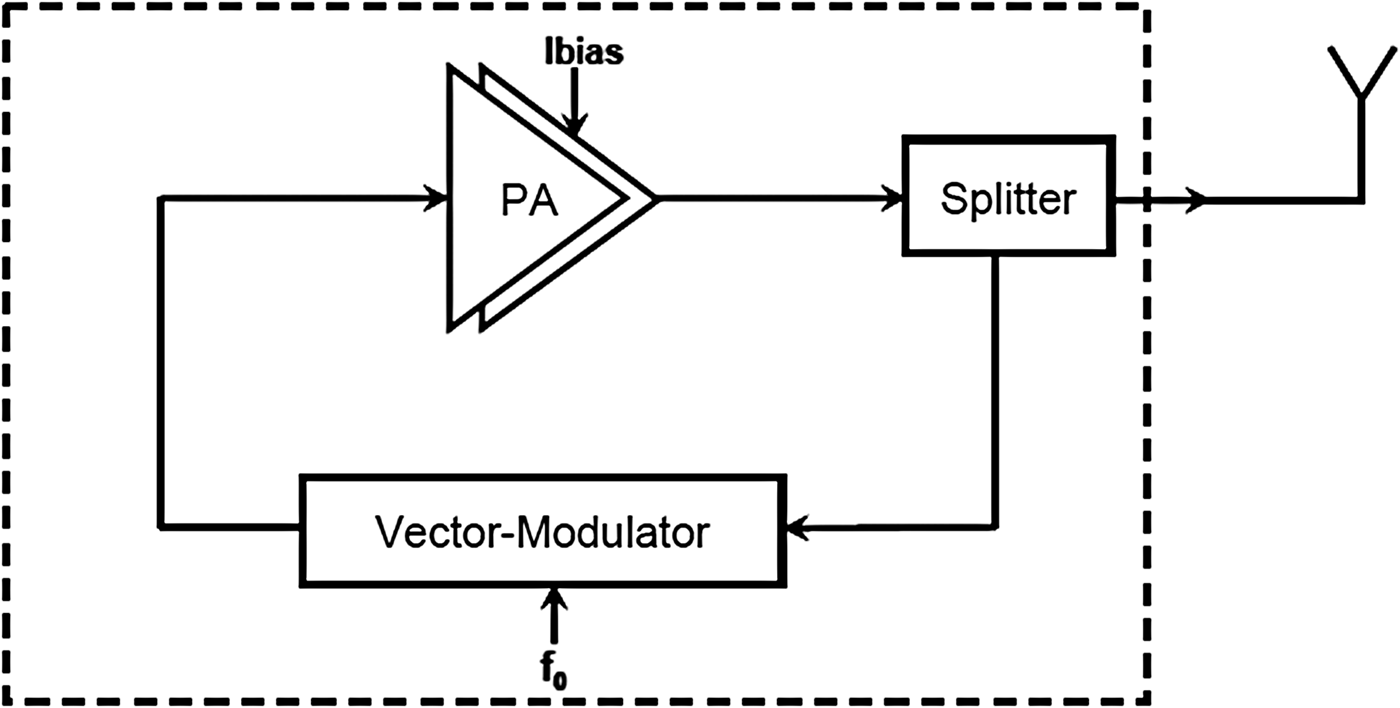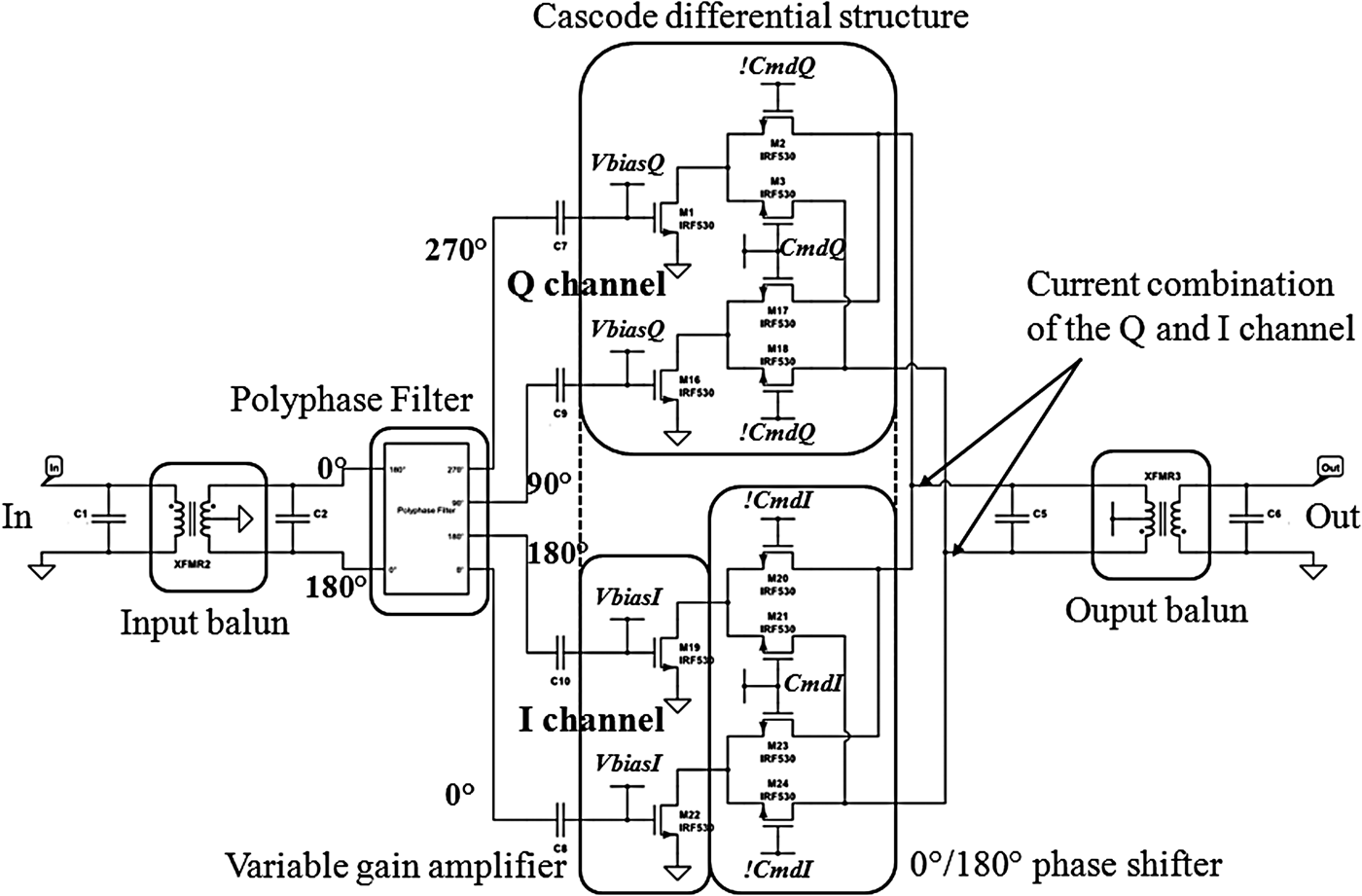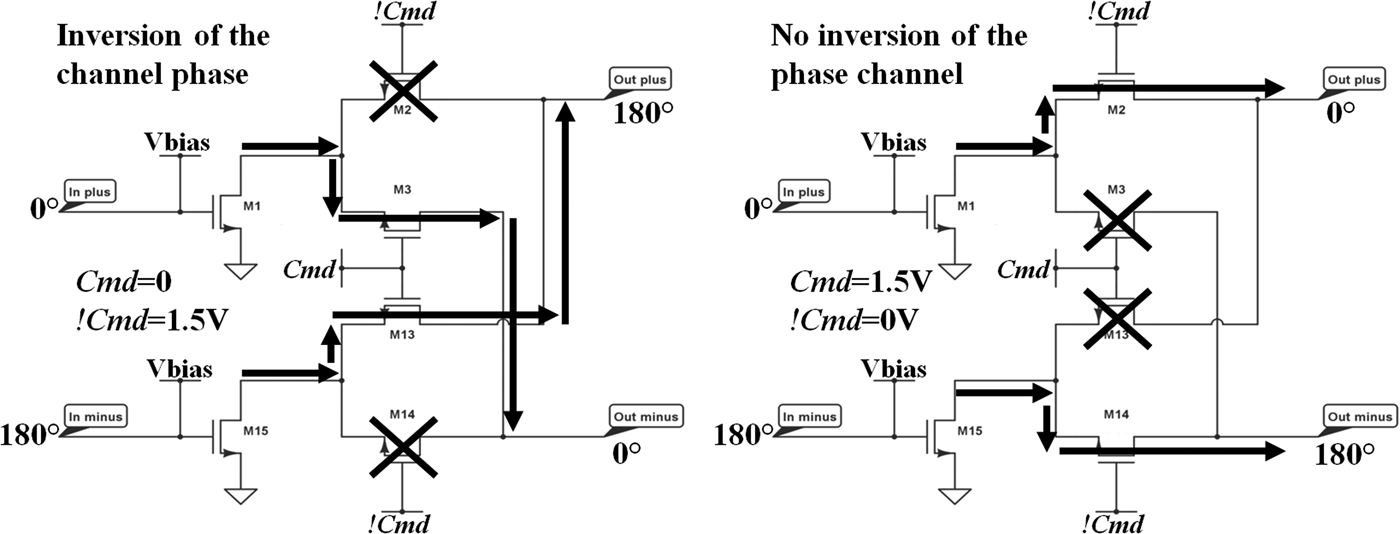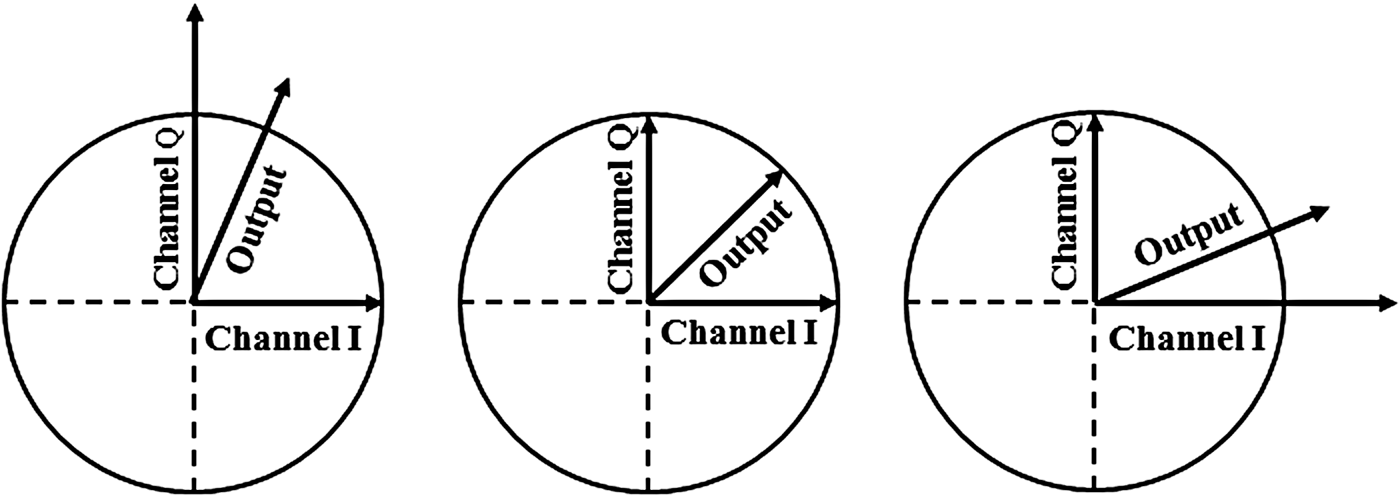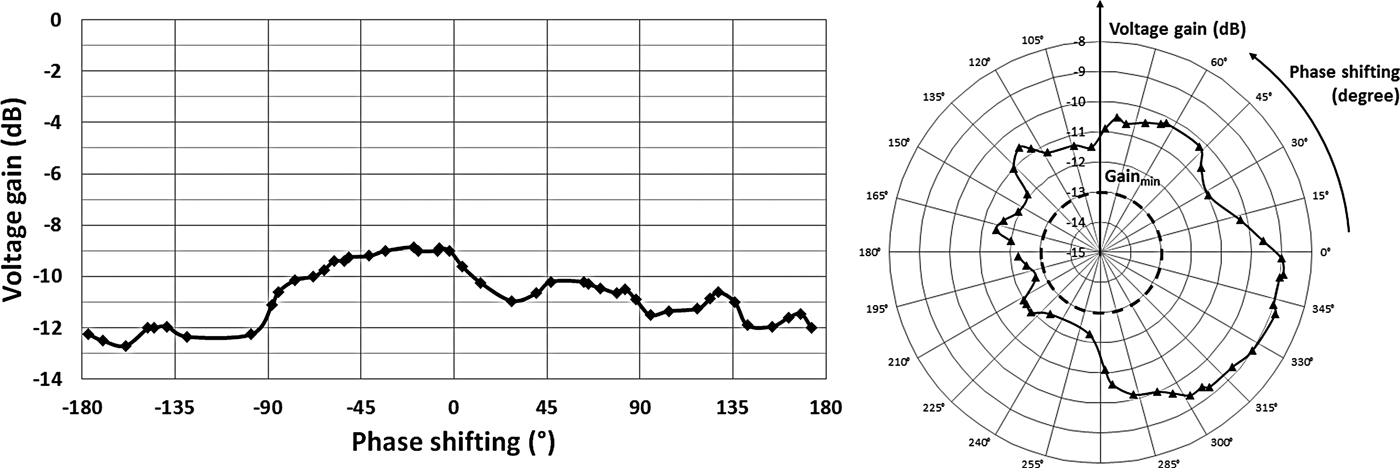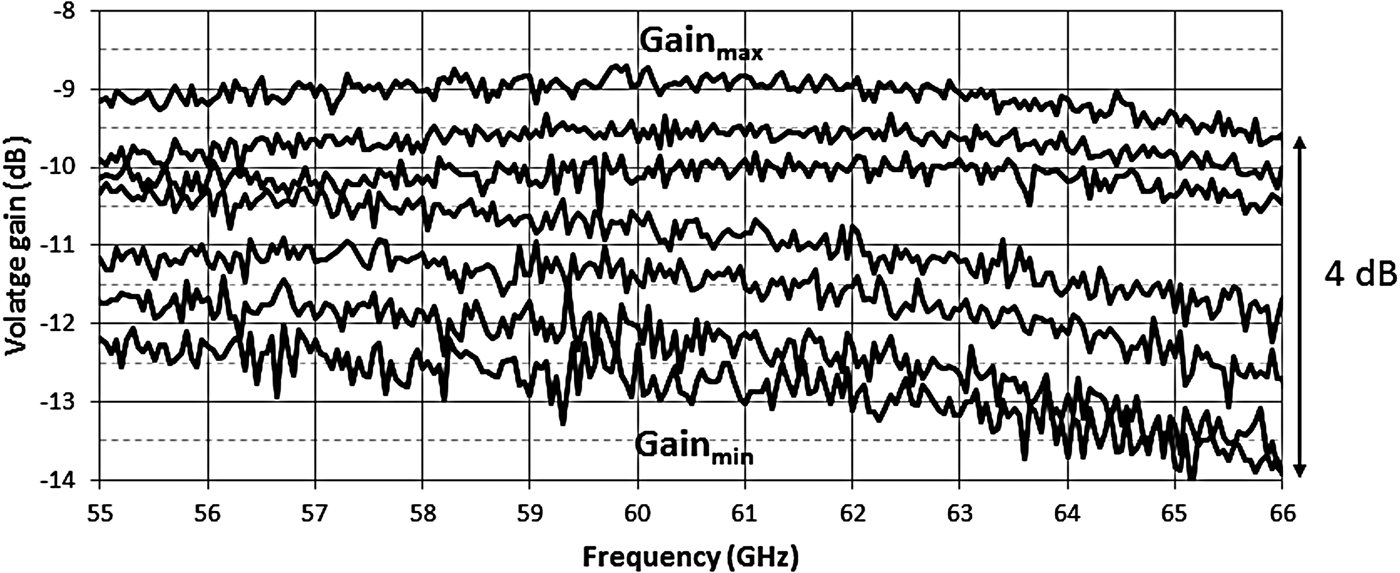I. INTRODUCTION
During the last decade, the unlicensed 9 GHz band about 60 GHz has been investigated for wireless communication and high data rate transfer applications. Several standards have been created for that matter such as IEEE.802.15.3c or WirelessHD ECMA and WiGiG, which are very close in terms of specifications. This work targets the frequency band of these standards from 57 to 66 GHz in Europe.
The key issues of transmitter architecture are the cost and the power consumption. A number of classical structures have been studied for this purpose including complementary metal–oxide–semiconductor (CMOS) designed structures which reduce the cost and the area [Reference Siligaris1]. This kind of usual CMOS transmitter can be further improved in terms of cost and consumption, thanks to a power voltage controlled oscillator (VCO) structure developed previously at 60 GHz in a 65 nm CMOS technology from STMicroelectronics [Reference Dréan, Martin, Deltimple, Kerhervé, Martineau and Belot2]. The principle of this original architecture consists of drastically reducing the number of blocks in comparison with common transmitter architectures like the heterodyne or homodyne architecture. As illustrated in Fig. 1, it consists of a loop composed of a 60 GHz CMOS power amplifier [Reference Moret, Deltimple, Kerhervé, Larie, Martineau and Belot3] in the direct path and a phase shifter in the feedback path. The phase shifter uses a part of the output signal, thanks to a power splitter which format this signal to fulfill the Barkhausen oscillating conditions, which correspond to a compensation of the gain in the direct path and the loss in the feedback, and a phase difference of 0° is required between the input of power amplifier and the output of the feedback loop. For this purpose, a vector modulator is used in the feedback loop in order to compensate the power amplifier phase and lead to oscillations.

Fig. 1. Power VCO diagram.
Phase-shifter topologies can be depicted in two categories: passive and active phase shifters. Passive phase shifters offer better bandwidth and linearity than active ones and have a very low power consumption [Reference Zhou, Qian and Yu4, Reference Tabesh, Arbabian and Niknejad5]. However, their losses generally increase with large phase shift range. To achieve the full 360° phase shift range with fine resolution, passive phase shifters are not the good candidates. Active phase shifter based on vector modulator allows 360° phase shift range with lower losses, nevertheless they consumes more power and occupies more area [Reference Tsai and Natarajan6, Reference Juntunen, Dawn, Laskar and Papapolymerou7] then passive solutions.
In this work, to compensate the phase bought by the power amplifier, the key point is the generation of all the phase shifting in continuous way. To do so, active phase shifter is preferred based on a vector modulator. A special care will be taken on the die area and power consumption.
The paper is organized as follows. First of all, the principle and schematic of the vector modulator (VM) is presented in Section II.A. Then, the mode of operation is described in the Section II.B. The VM was implemented in 65 nm CMOS technology from STMicroelectronics. Experimental measurements in the 55–66 GHz band are presented in Section II.C. Section III concludes the paper.
II. VECTOR MODULATOR
A) Circuit topology
The VM shown in Fig. 2 consists of an input balun, a polyphase filter, two differential cascode structures, and an output balun. The input transformer provides the conversion of common mode to differential mode. The polyphase filter shown in Fig. 3 generates a phase difference of 90° between the two differential channels. Then, it generates from a differential signal (0° and 180°) two differential signals in quadrature the path in phase: I (0°, 180°), and the path in quadrature: Q (90°, 270°). The polyphase filter is composed of transmission lines. It was designed using electromagnetic simulations to generate 90° delay between the two differential output signals.

Fig. 2. Schematic representation of the vector modulator with bias and control voltages.

Fig. 3. Layout view of the polyphase filter.
Each path is composed of a variable gain amplifier and 0°/180° phase shifter. To realize these two functions, a cascode differential structure is implemented. The common-source transistors amplify the signal and the common-gate transistors are used to inverse the signal phase. Then the gain can be set in modifying the biasing voltages (VbiasQ and VbiasI) of the common-source transistors; and the phase inverting is controlled by the gate voltage of the common-gate transistors: CmdI, !CmdI, CmdQ, and !CmdQ.
In the vector-modulator output, the I and Q paths are recombined in current to realize a vector sum, and then in voltage sent to a transformer to come back in common mode.
B) Principle of operation
A first setting can be done, in choosing adequately the control voltages, to select one of the four phase quadrants: 0°/90°, 90°/180°, 180°/270°, and 270°/360°. To do so, the control voltages CmdI, !CmdI, CmdQ, and !CmdQ are set at 0 or 1.5 V. When CmdI is set at 1.5 V (so !CmdI is set at 0 V), the I path phase is inverted as illustrated in Fig. 4. Reciprocally, when CmdI is equal to 0 V (!CmdI = 1.5 V), the I path phase is not inverted. It is same for the Q path with CmdQ and !CmdQ. Finally, in choosing correctly this four control voltages, one of the four quadrants can be selected as illustrated in Fig. 5.

Fig. 4. Schematic representation of the differential cascode structure.

Fig. 5. Selection of the VM phase quadrant.
Then a second fine setting can be done in modifying the biasing voltages VbiasI and VbiasQ to select accurately the phase in the quadrant beforehand selected. After the vector sum of the I and Q paths, all the phase shifts from 0° to 360° can be generated as illustrated in Fig. 6.

Fig. 6. Fine tuning of the VM phase shifting.
C) Experimental result
The vector modulator is fabricated in the STMicroelectronics 1.2 V 65 nm LP 1P7M CMOS process. Figure 7 illustrates the chip micrograph. It occupies an area of 748 × 1250 µm2 with radiofrequency pads. Depending on its configuration, it consumes from 17 to 42 mA under 1.5 V.

Fig. 7. Chip micrograph of the VM
The voltage gain measurement in function of the phase shifting at 60 GHz is presented in Fig. 8. The vector modulator is able to generate all the phase represented in the polar circle with a voltage gain higher than −13 dB.

Fig. 8. Phase shifting and voltage gain of the VM measured at 60 GHz.
The vector modulator exhibits a stable voltage gain (±1 dB) on the whole measurement band from 55 to 66 GHz. It is comprised between −9 and −13 dB depending on his configuration as shown in Fig. 9.

Fig. 9. Voltage gain of the VM from 55 to 66 GHz.
Figure 10 shows the phase shift measurement depending on the frequency. The phase shifts of each quadrant are measured from 57 to 66 GHz. The VM is able to generate every phase from 0° to 360° over the 9 GHz band.

Fig. 10. Phase shift from 0° to 360° from 57 to 66 GHz.
Table 1. 60 GHz phase shifter state of the art.

* VTLT: varactor-loaded transmission line.
† RTPS: reflective-type phase shifter.
‡ VM: vector modulator.
III. CONCLUSION
An active reconfigurable VM is implemented in 65 nm CMOS technology from STMicroelectronics. The VM is based on baluns, polyphase filter, and cascode amplifiers. Measurement results realized at 60 GHz show that this architecture offers a original solution to generate all the phase shifting from 0° to 360° in continuous way using control voltages. The voltage gain varies between −13 and −9 dB in function of the phase shift generated with a static consumption between 26 and 63 mW depending on its configuration. It was designed to fulfill the feedback loop needs of the 60 GHz power VCO and paves the way to a new way to realize emitters.







